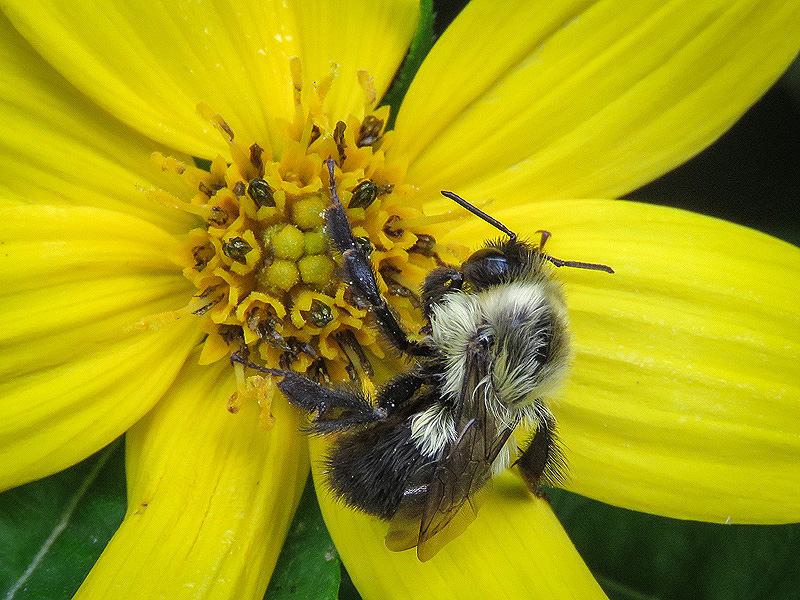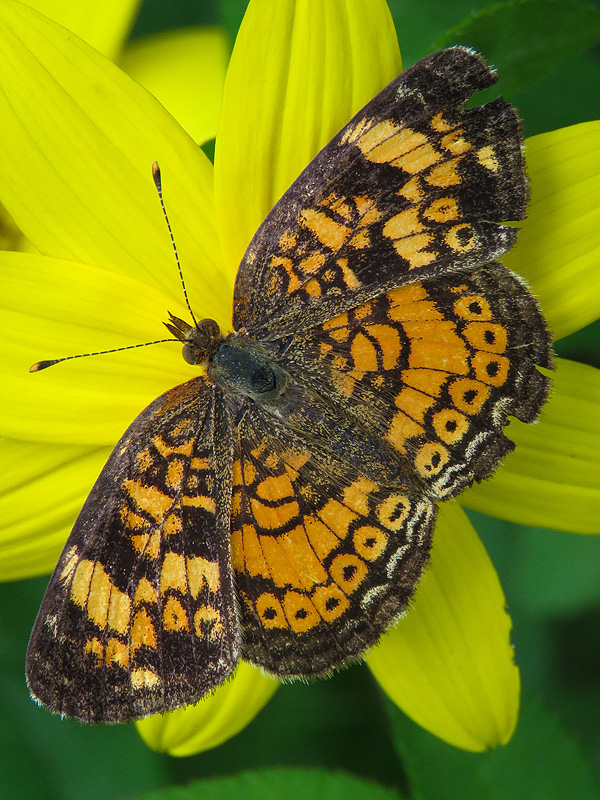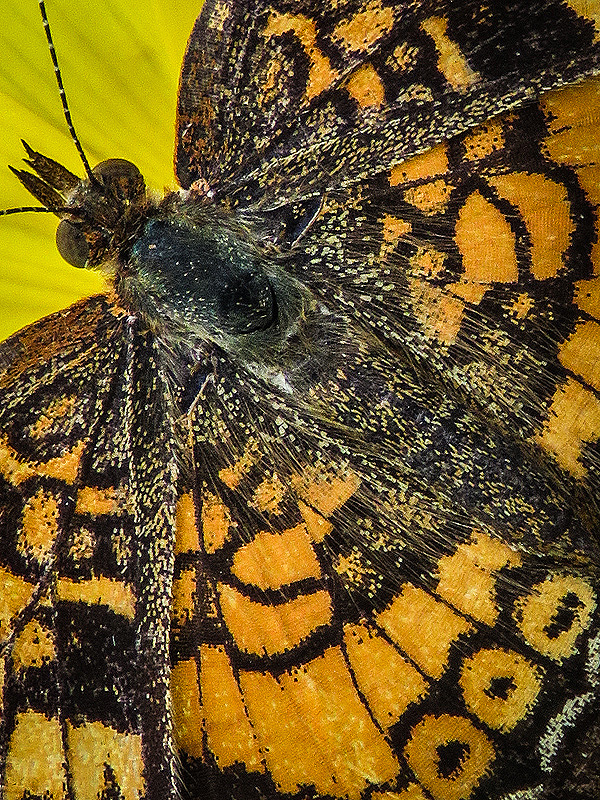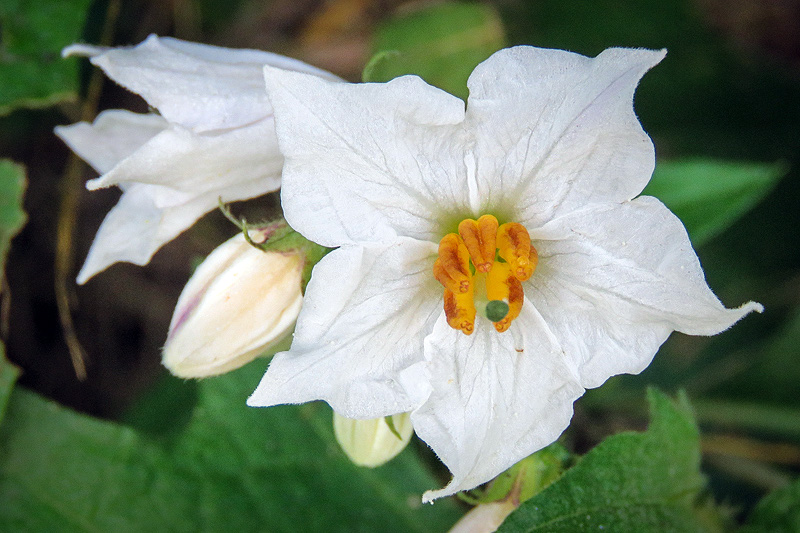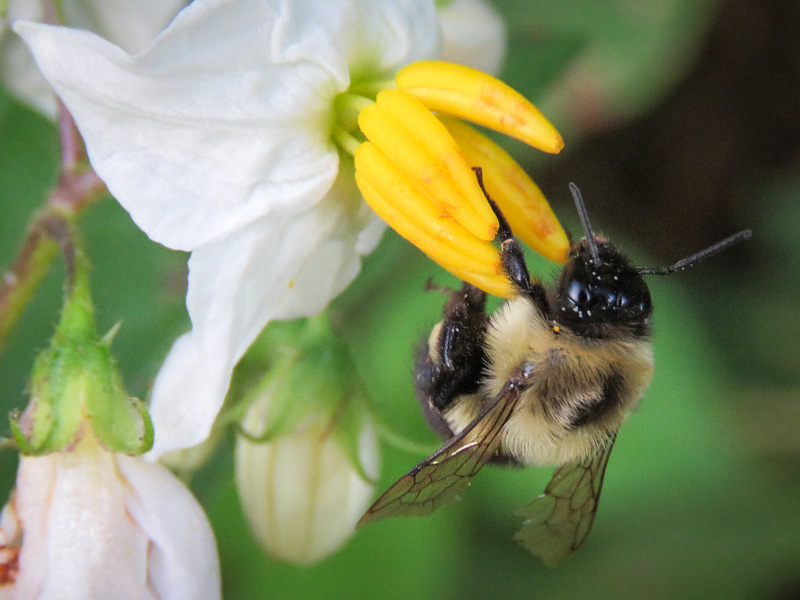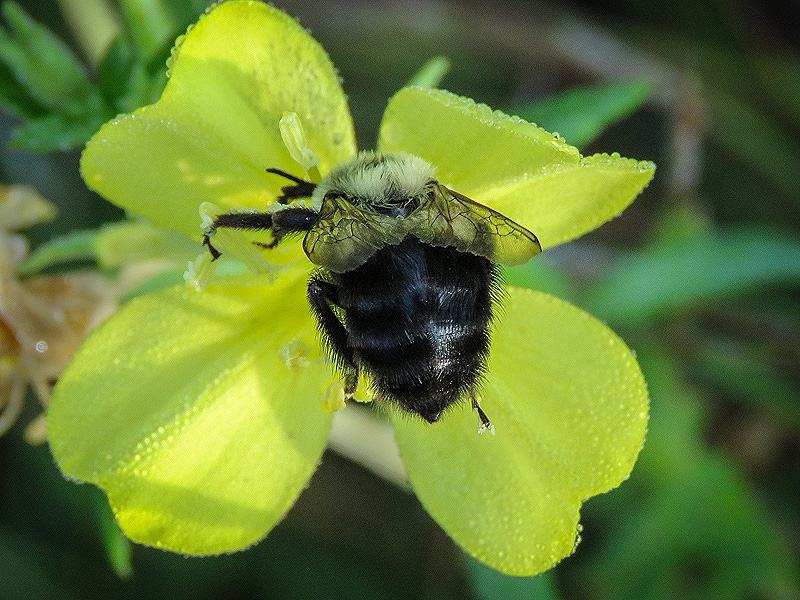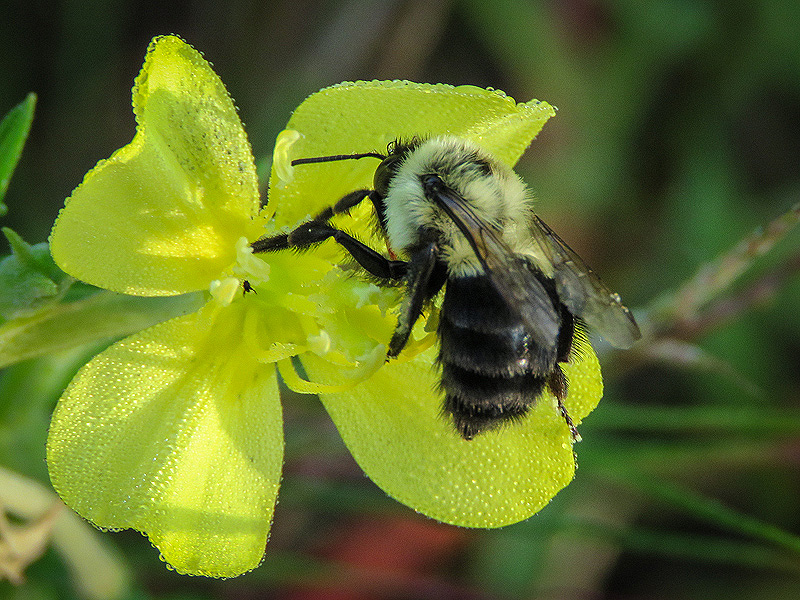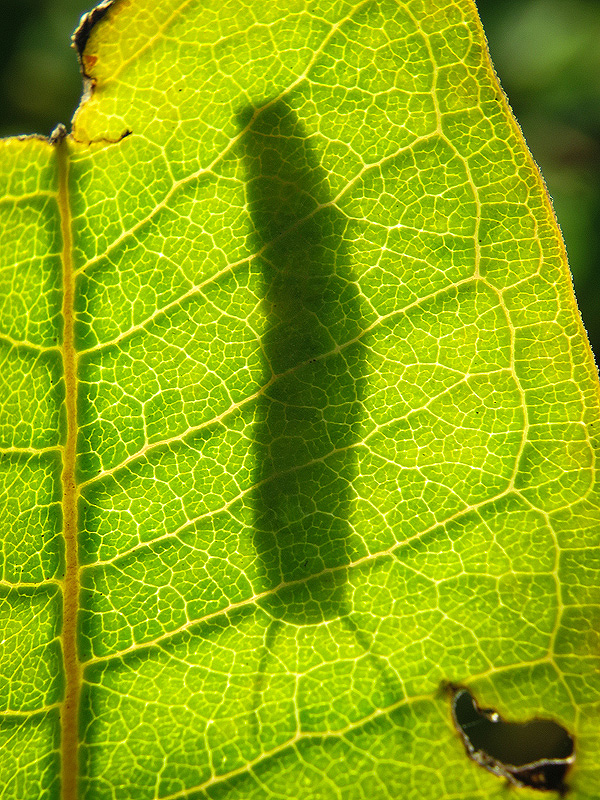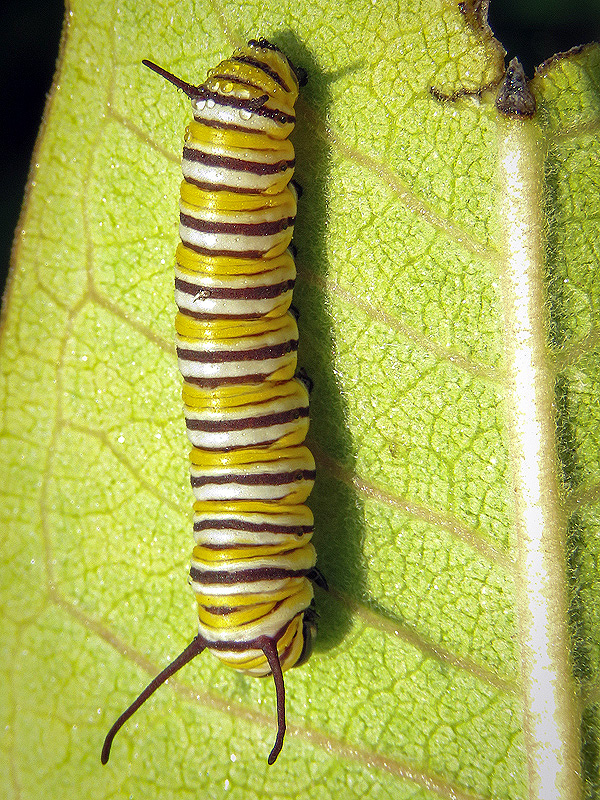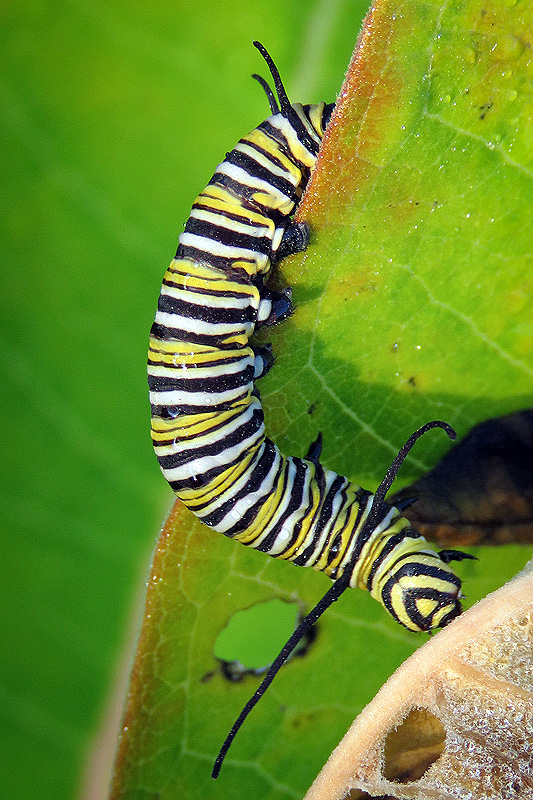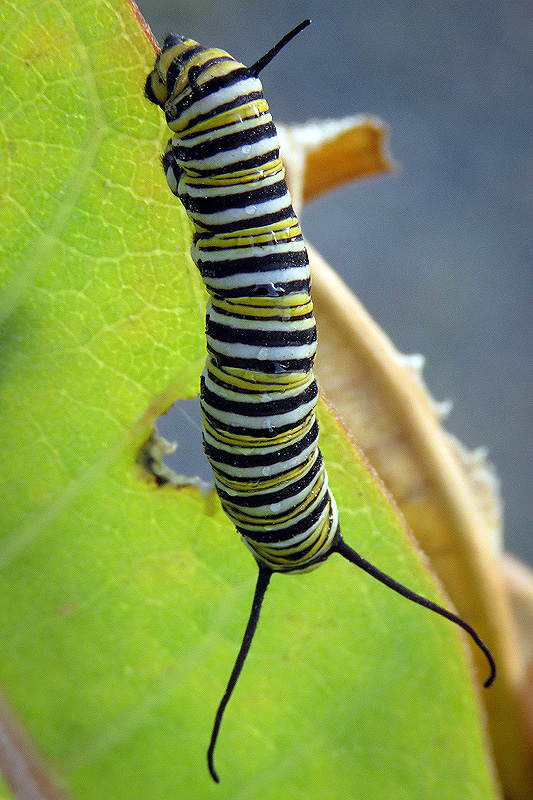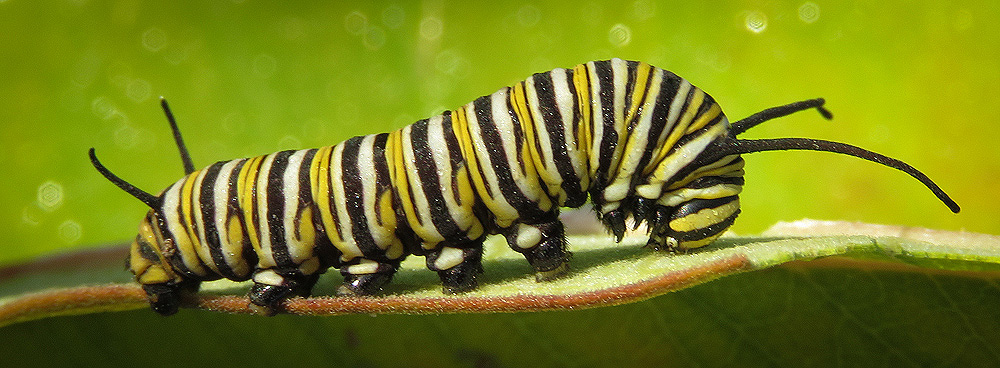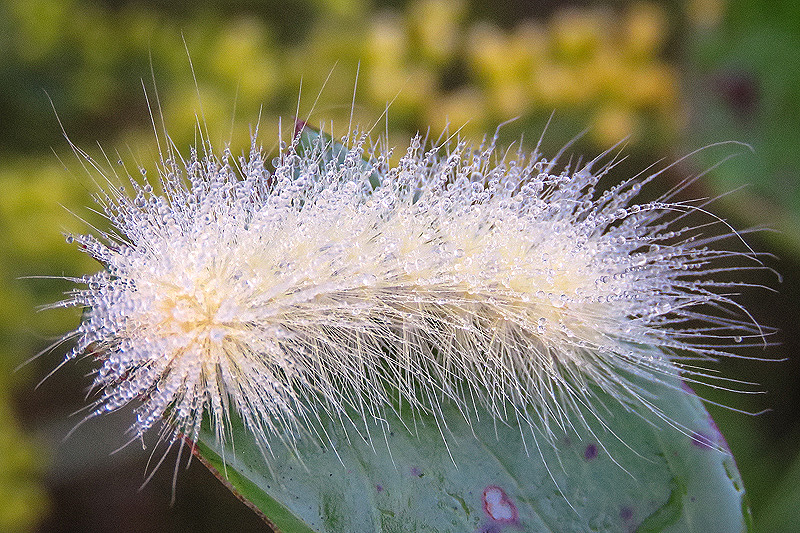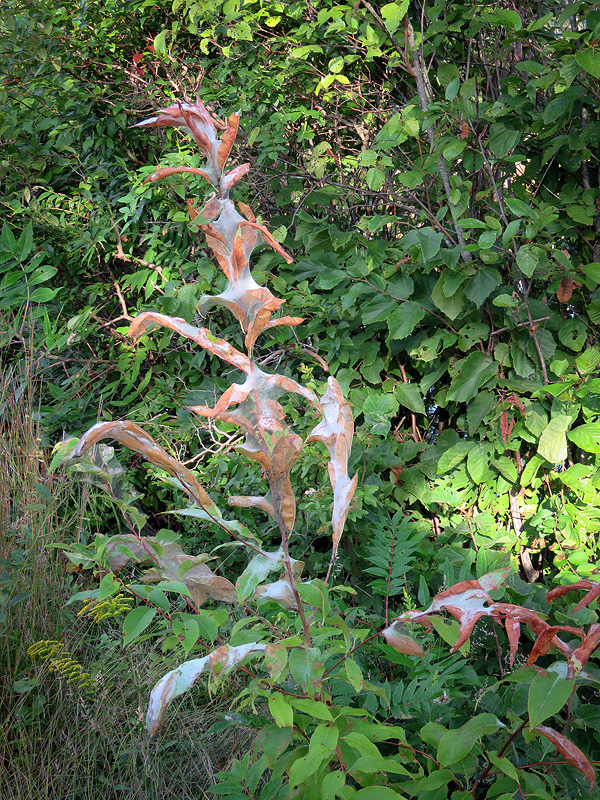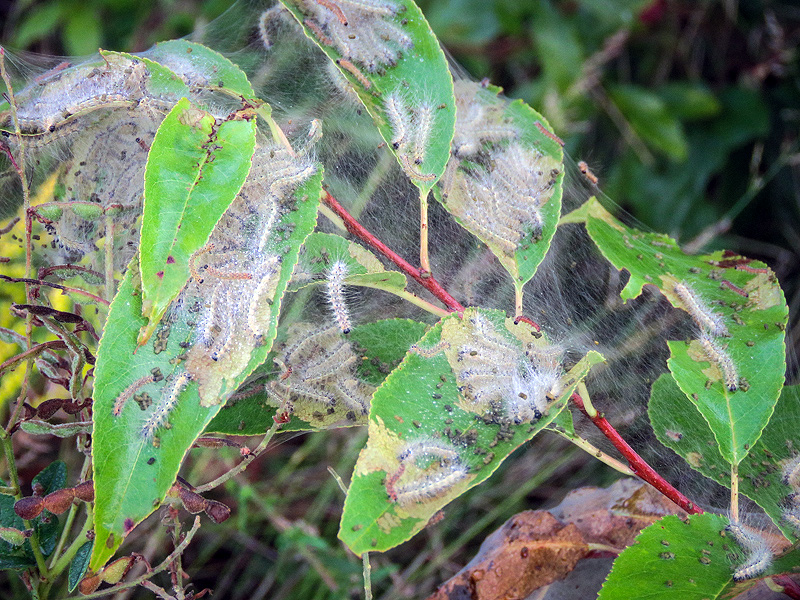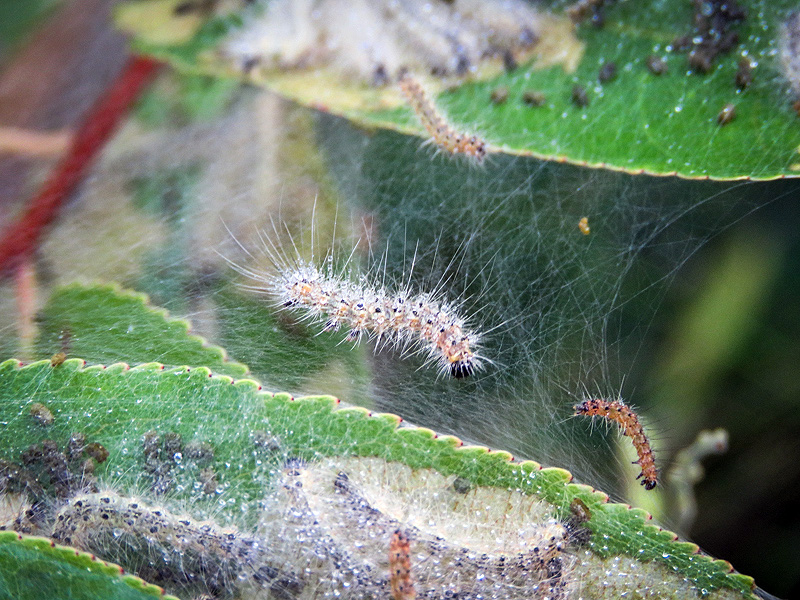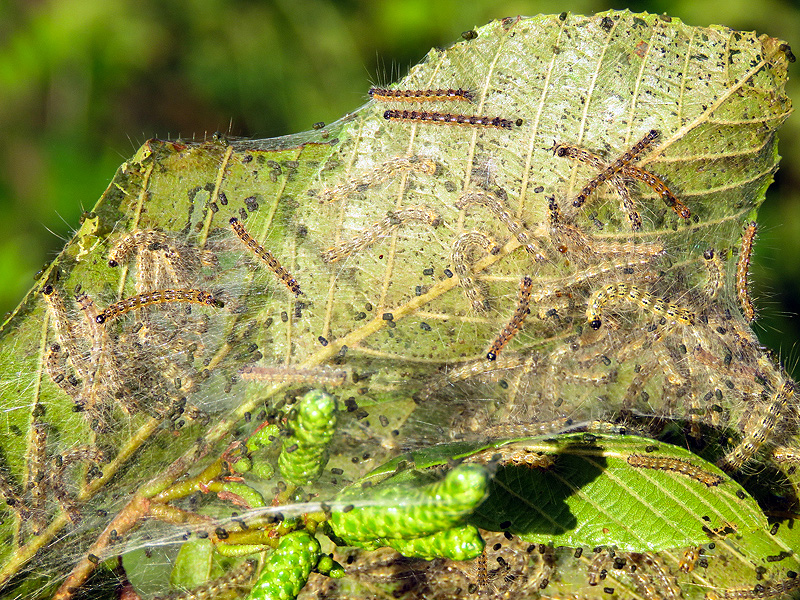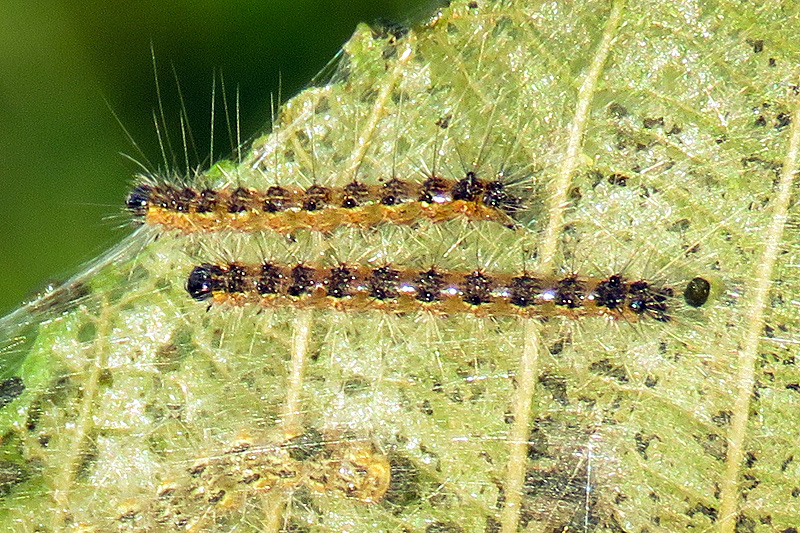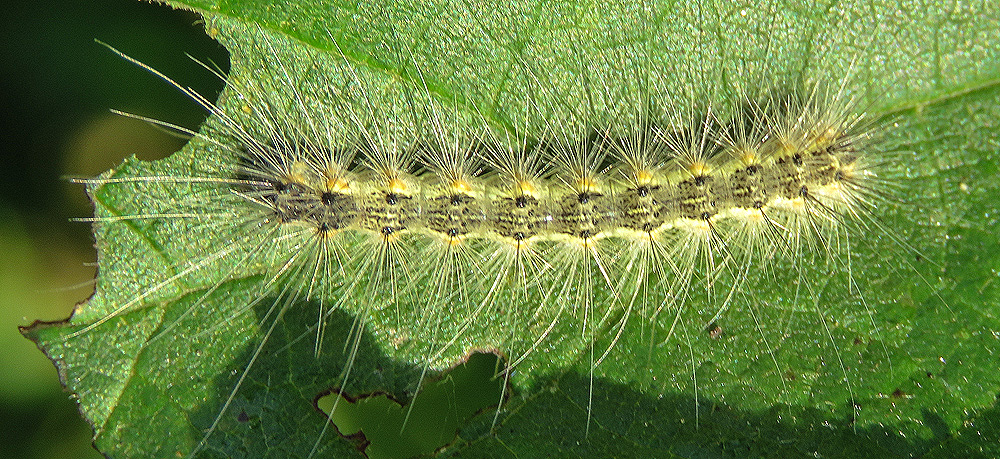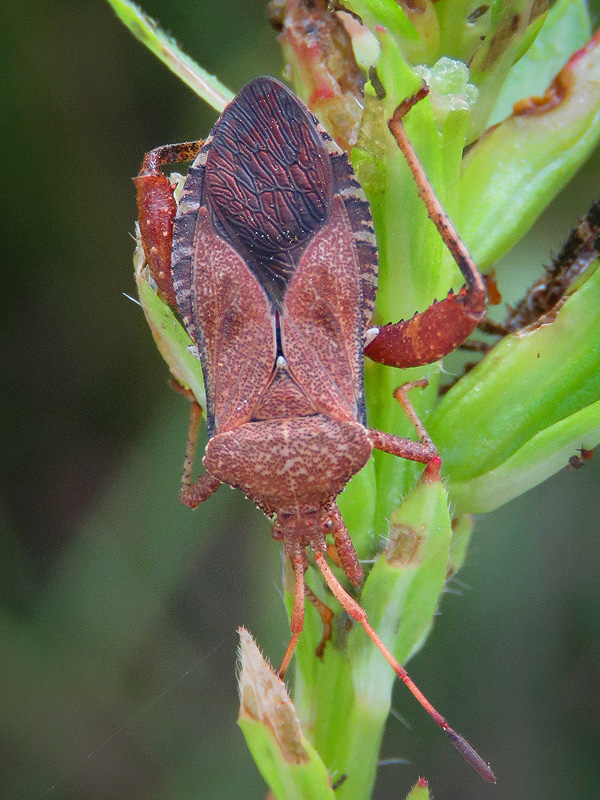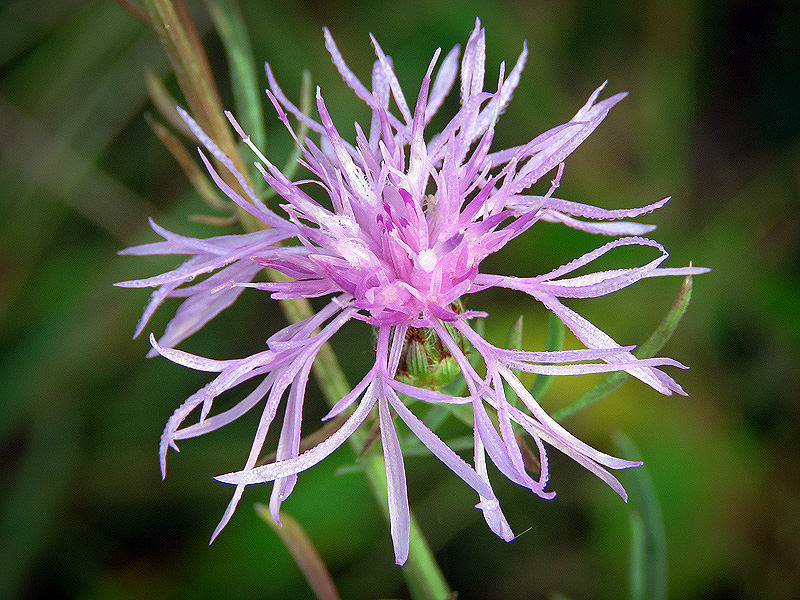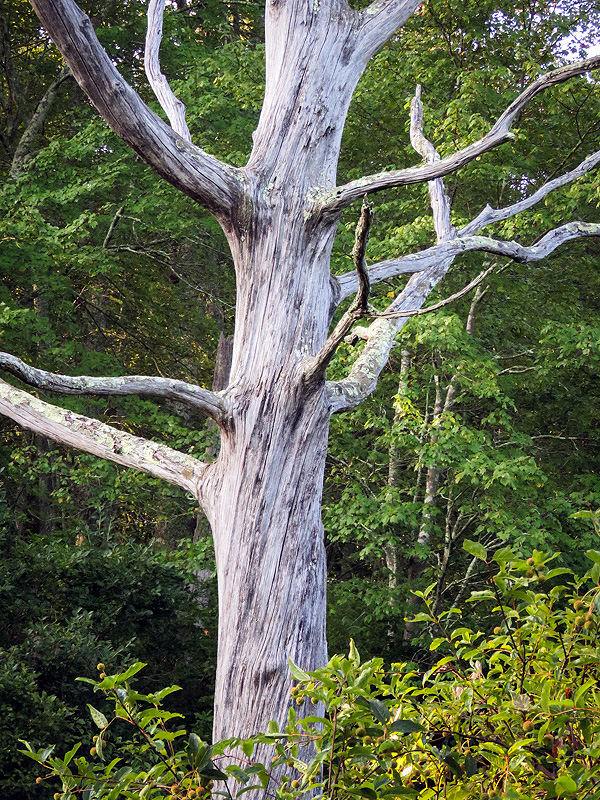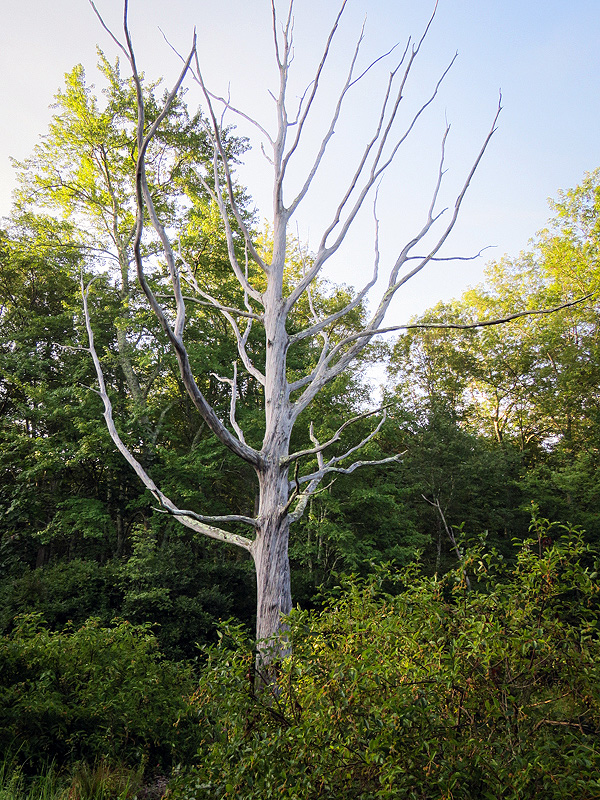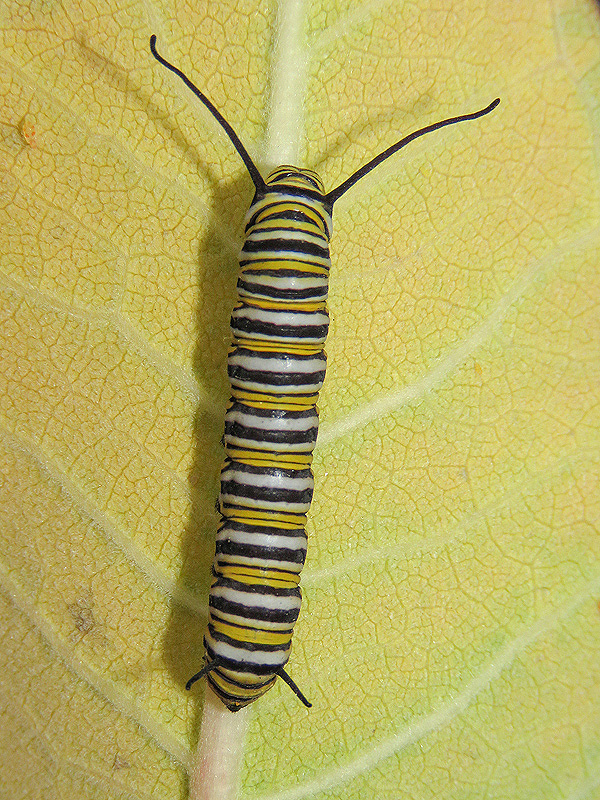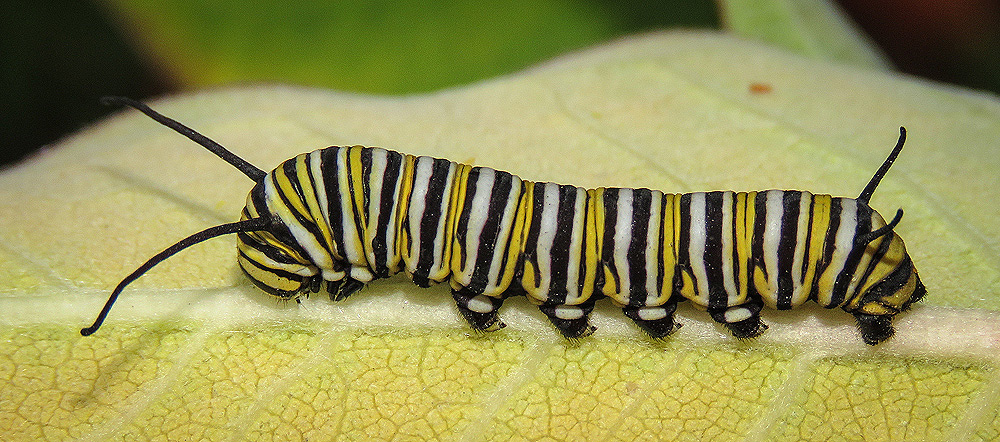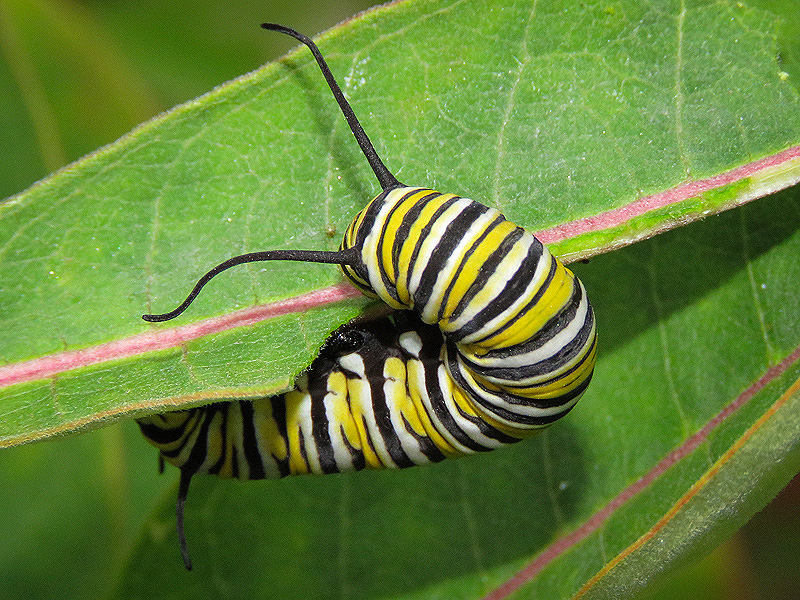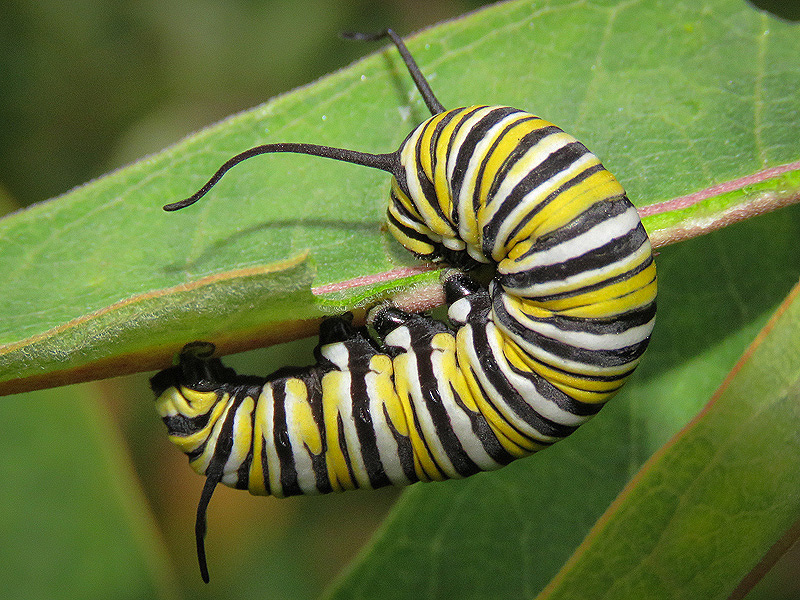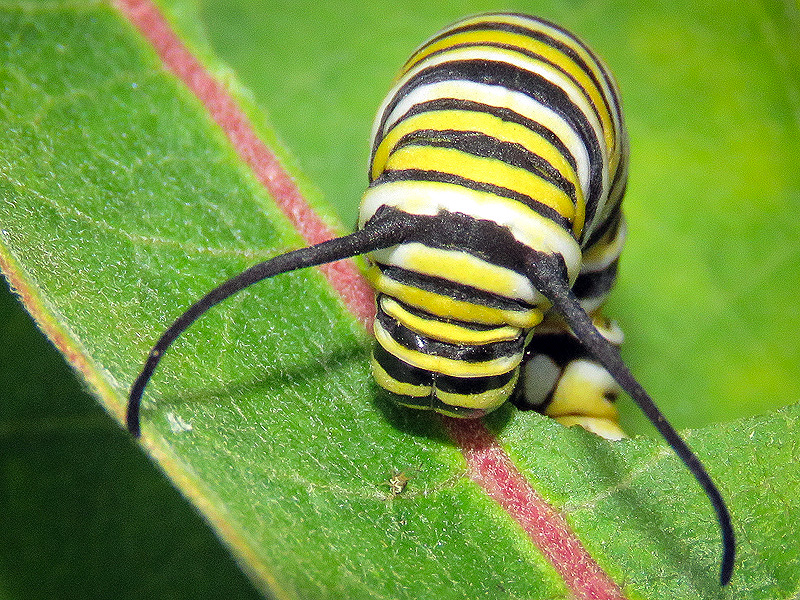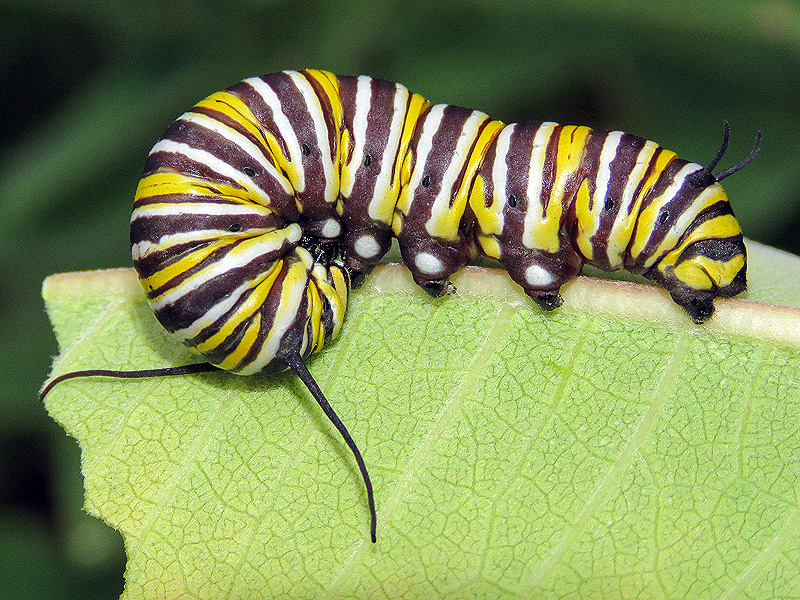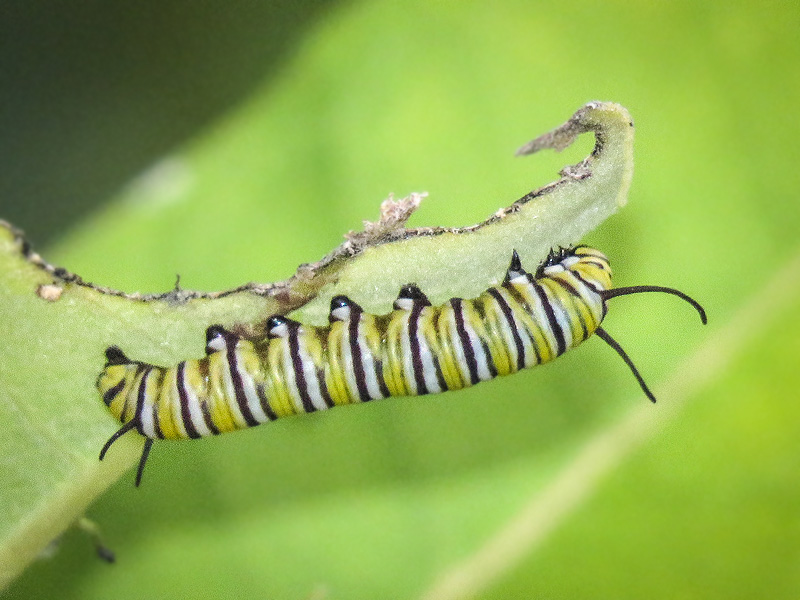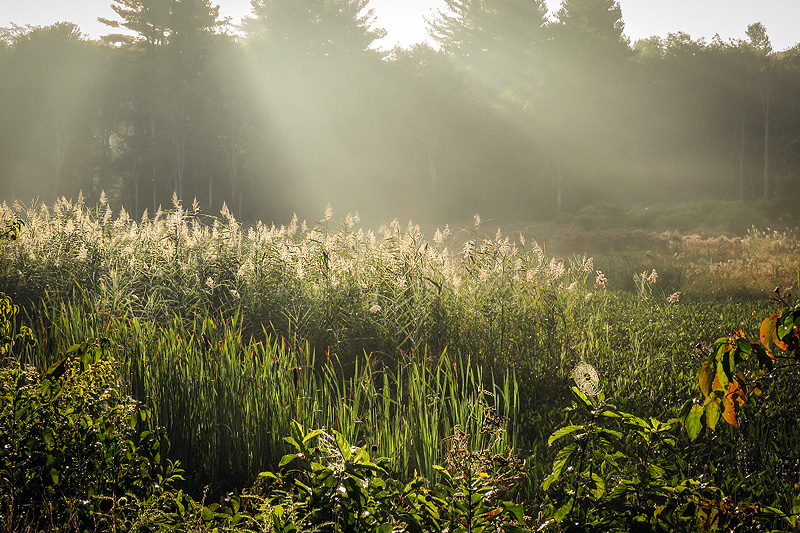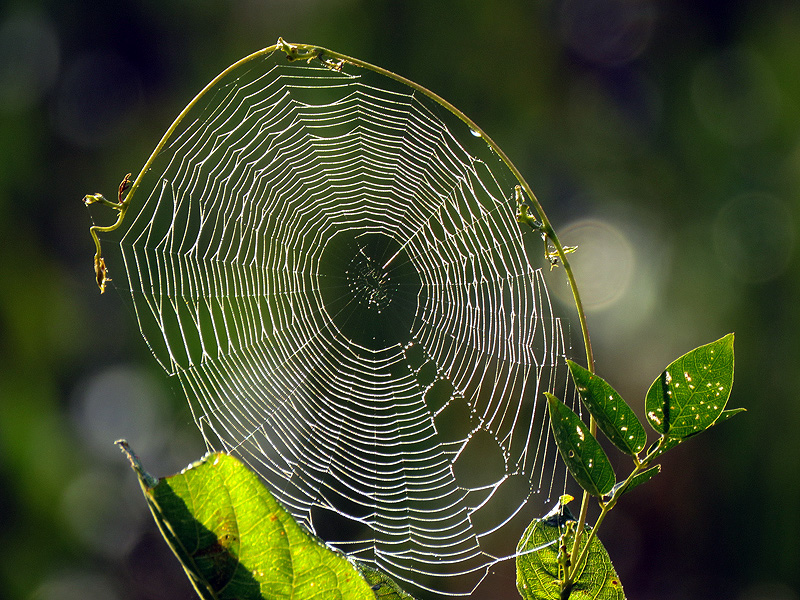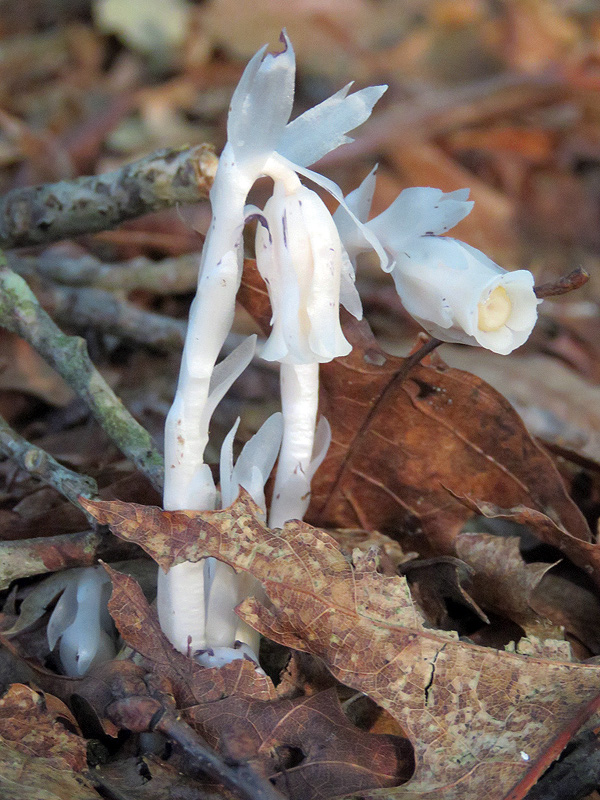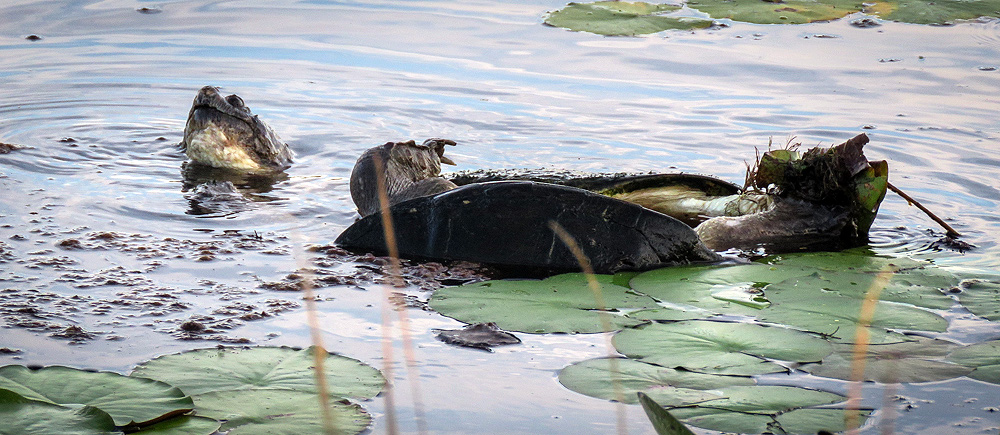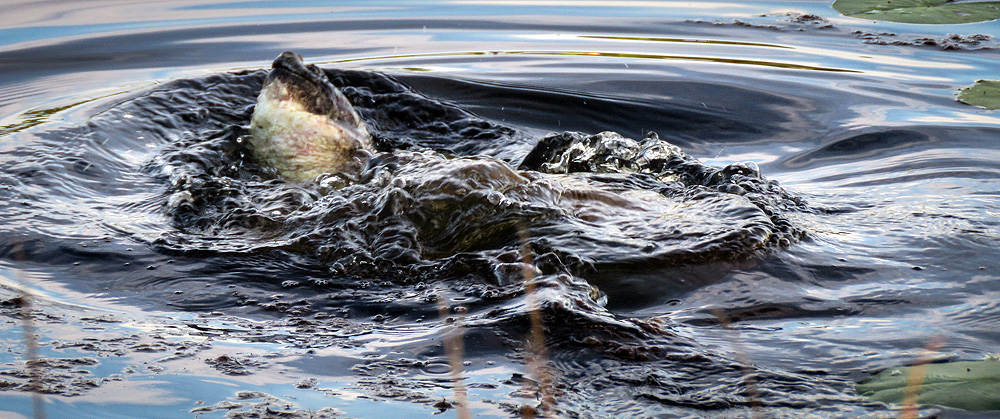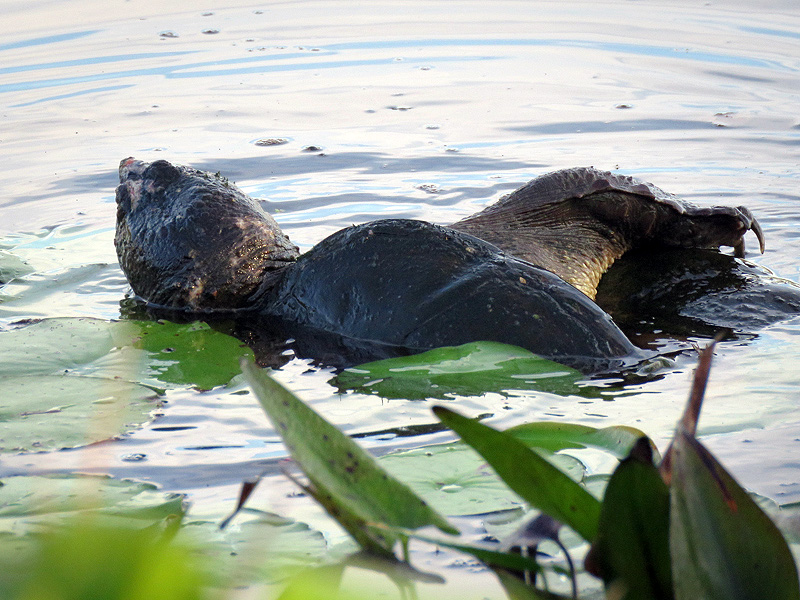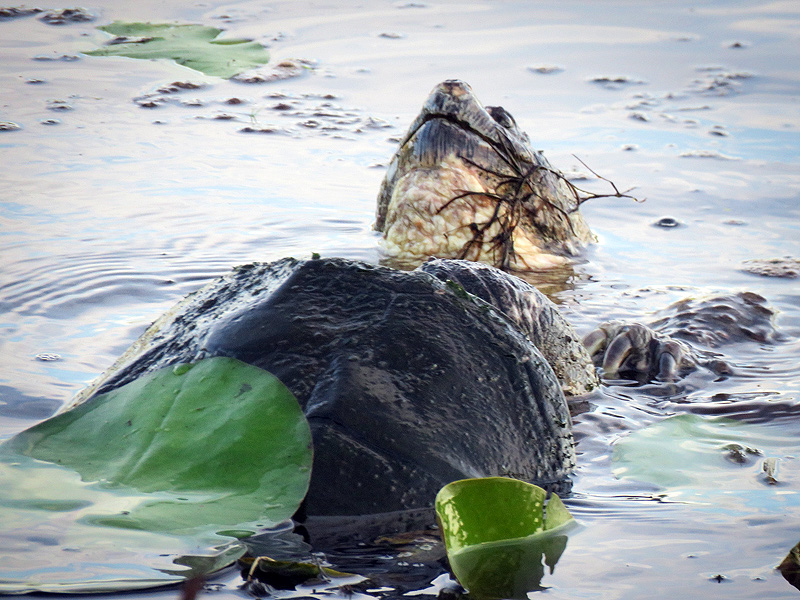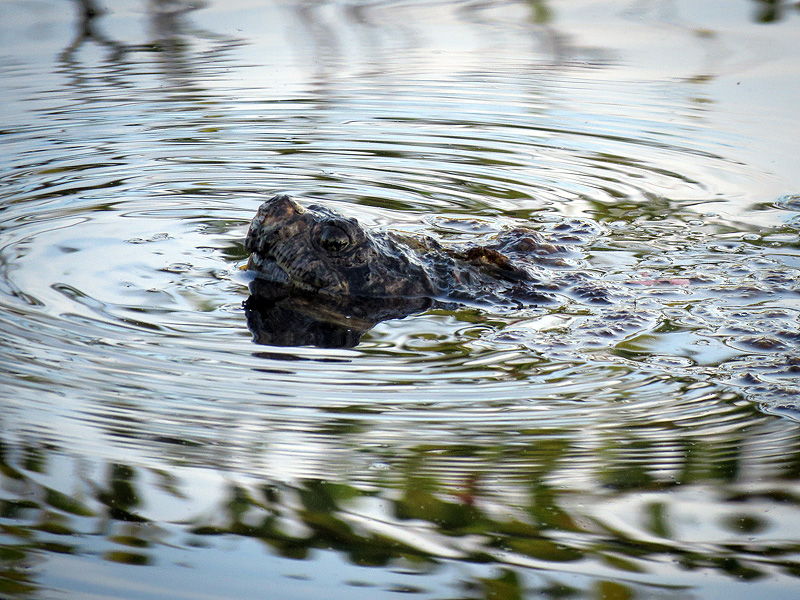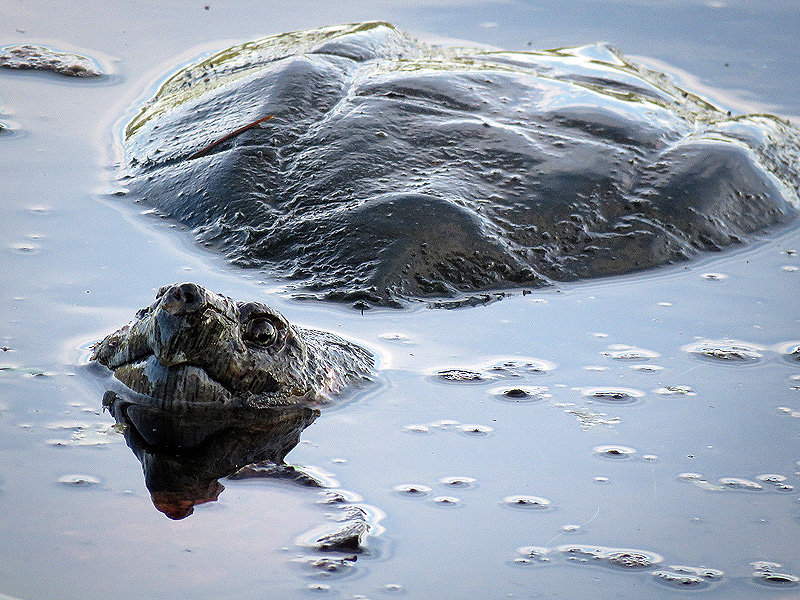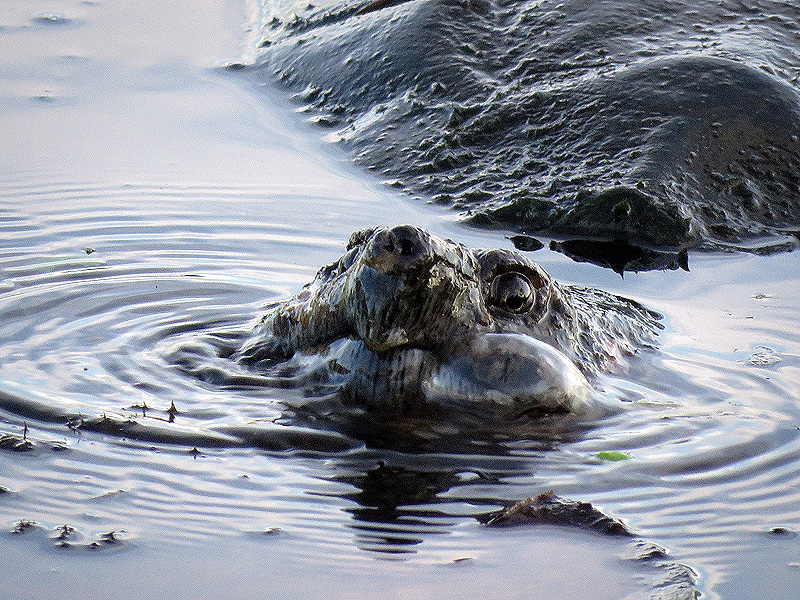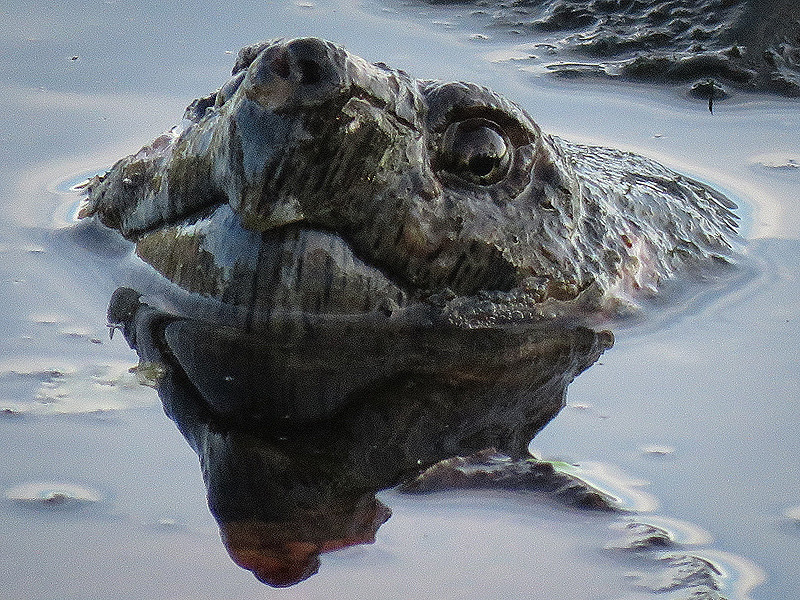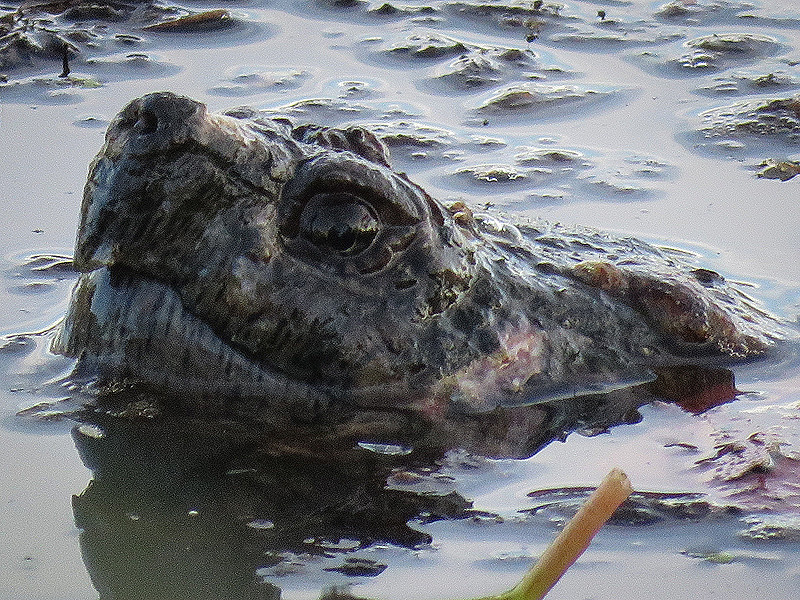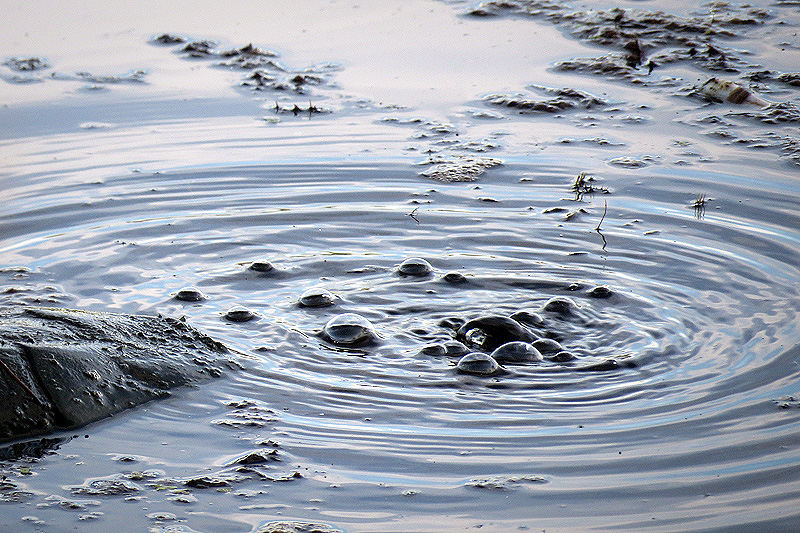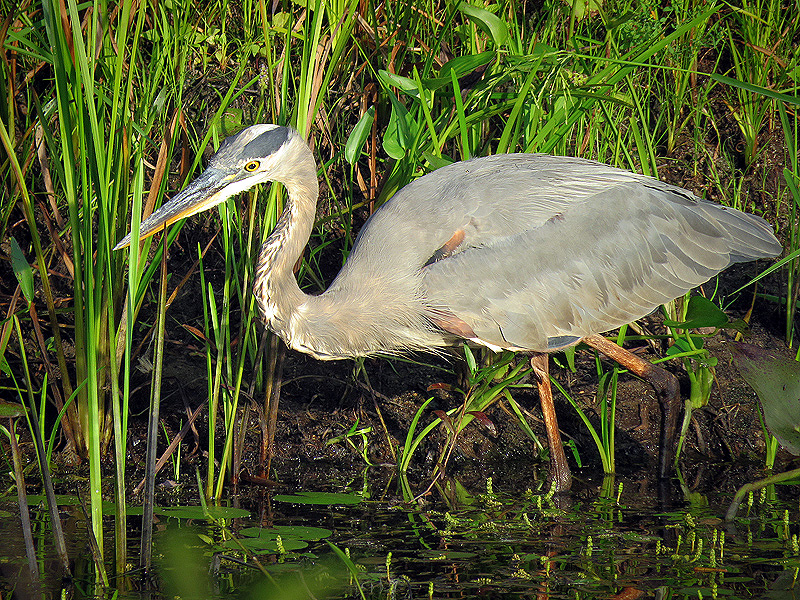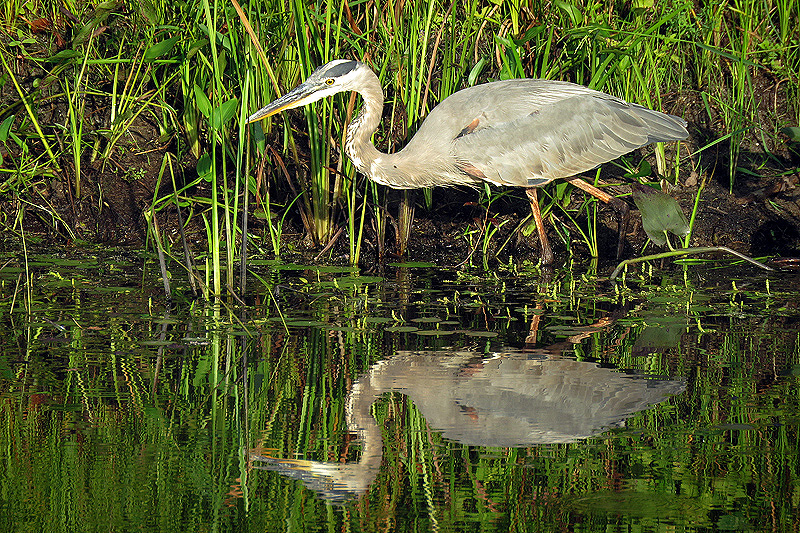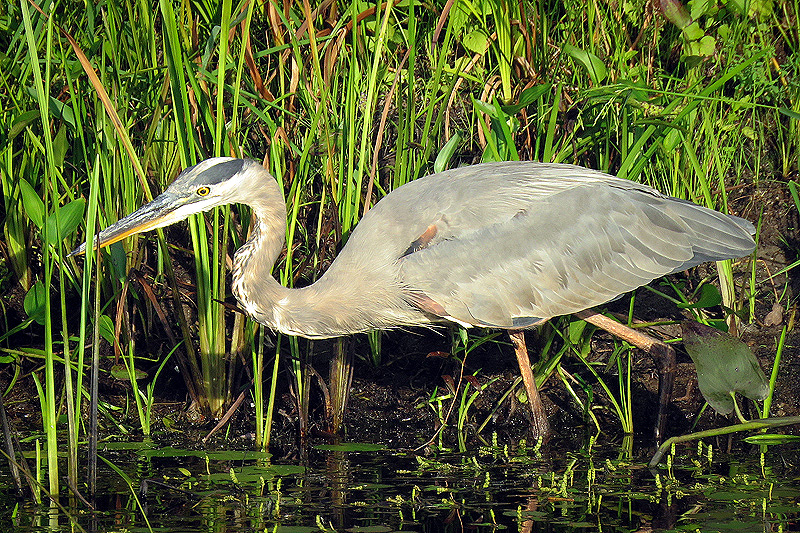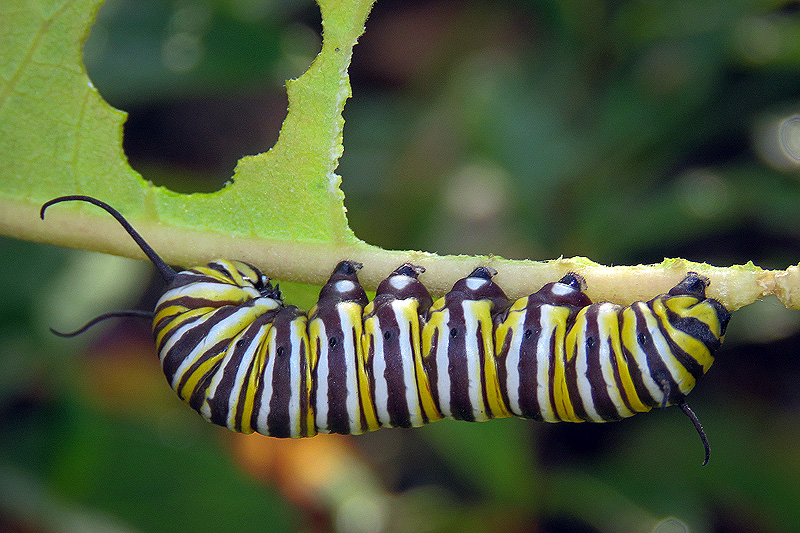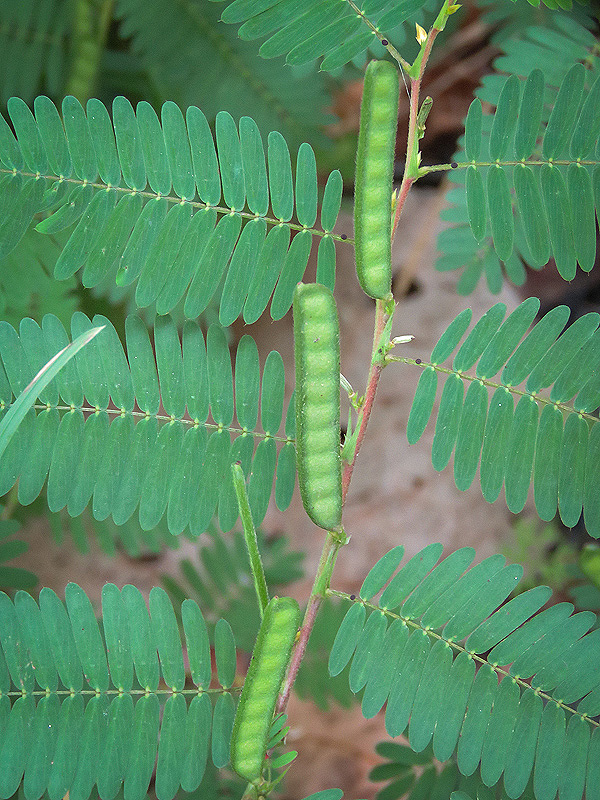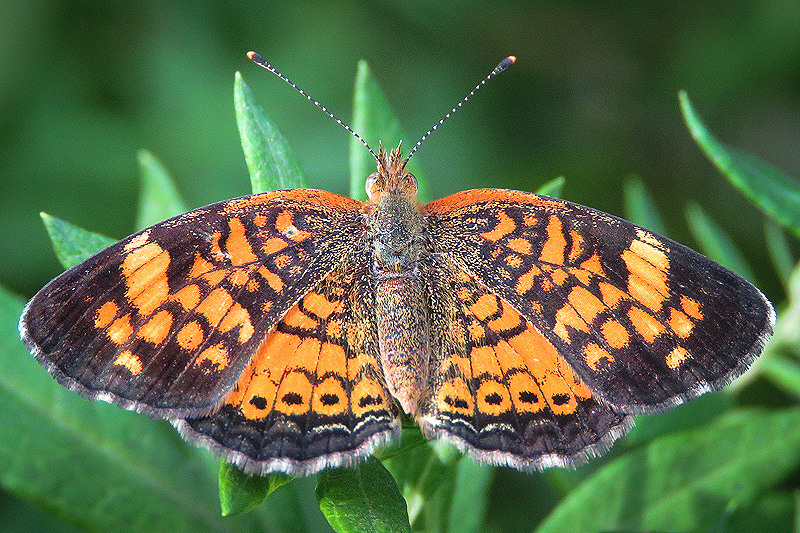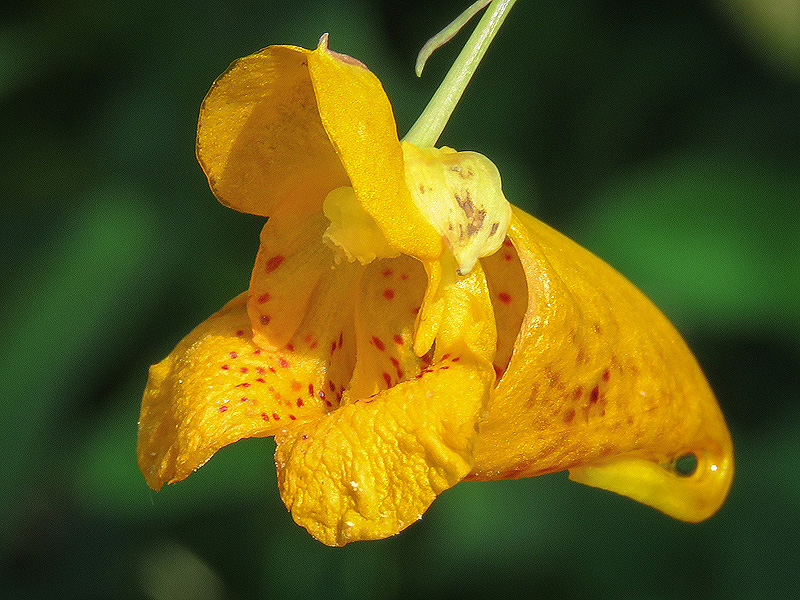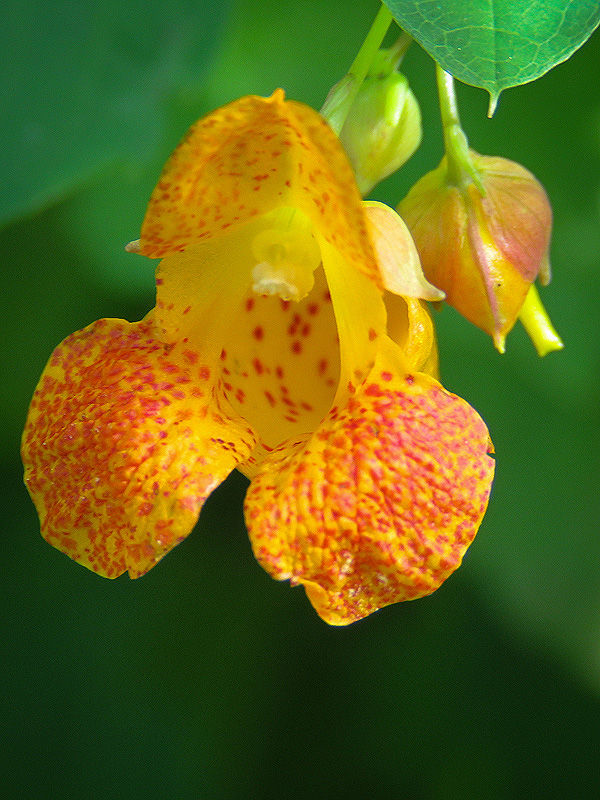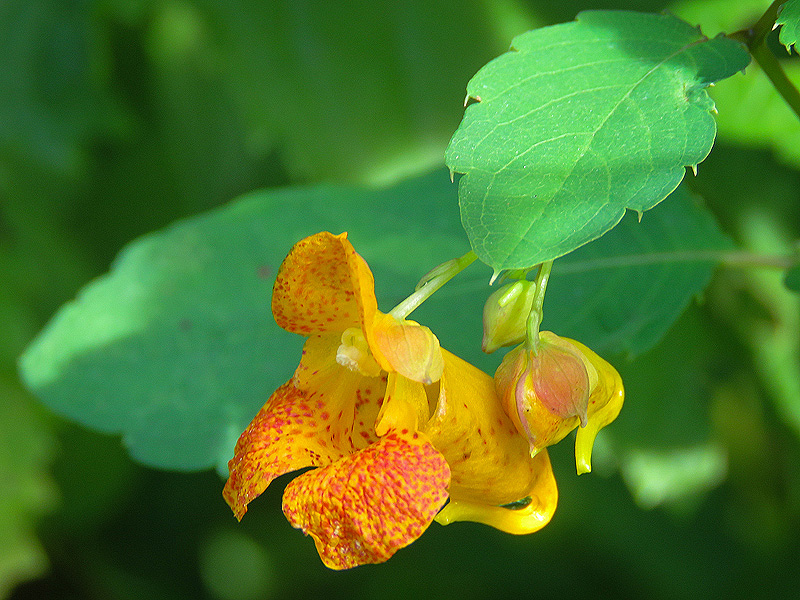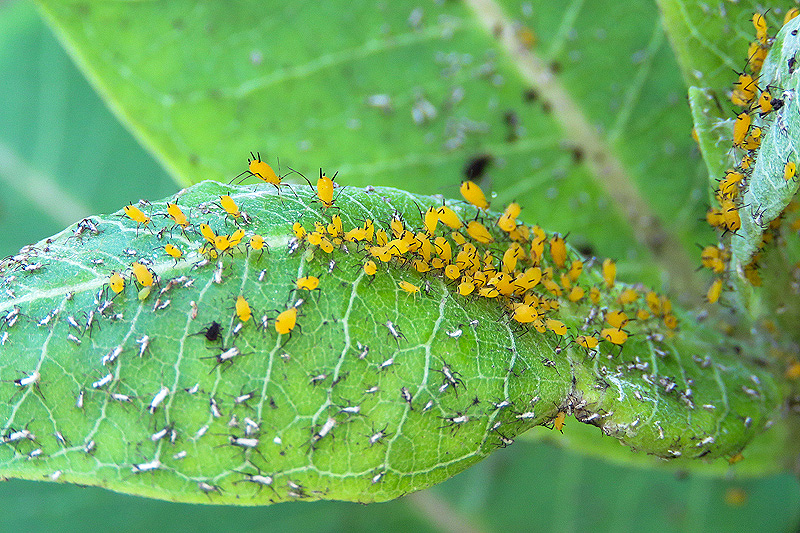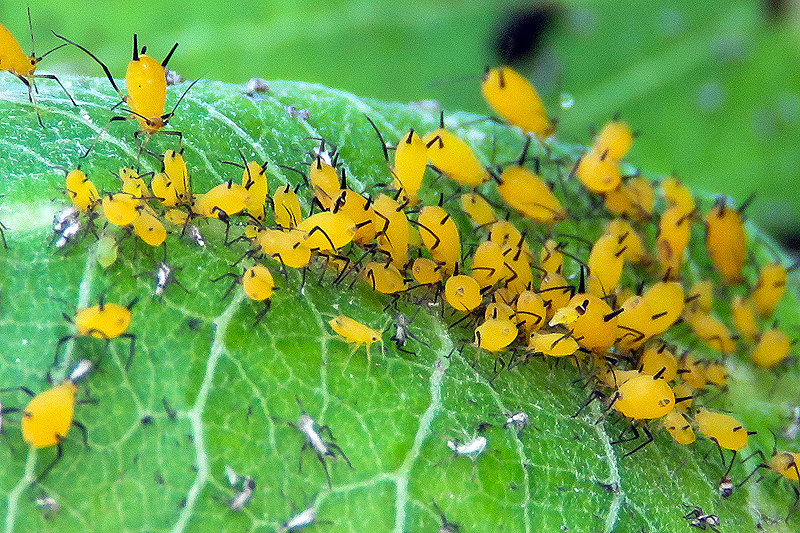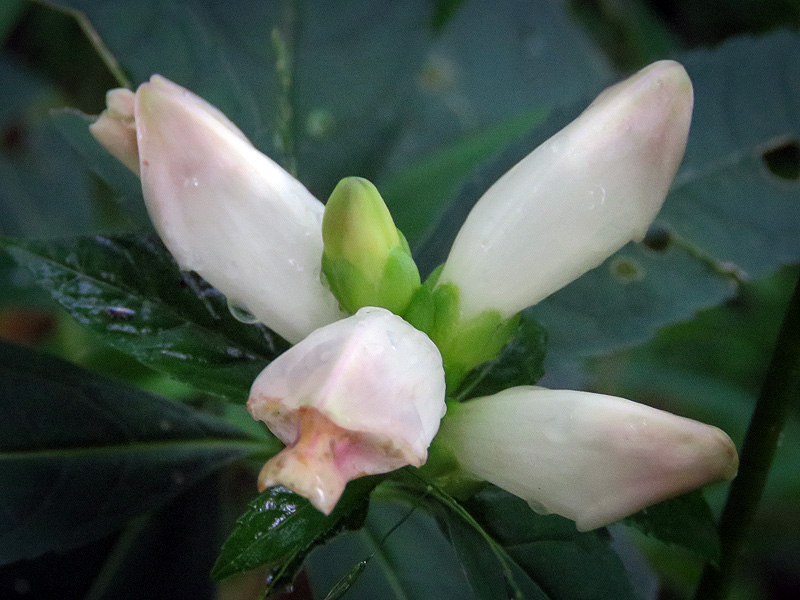Along the Air Line... 2018 - Summer, Part 13 The Air Line Trail in Eastern Connecticut - Stan Malcolm Photos |
HOME: Air Line... 2018 Pages Menu Stan's FlickR Albums |
September 2nd. Bumble Bee (Family Bombidae) spent the night on a Woodland Sunflower (Helianthus divicariatus). |
Later, a Pearl Crescent (Phyciodes tharos), also on Woodland Sunflower. |
|
Horse-nettle (Solanum carolinense). Spiny stems and leaves; same genus at tomato and potato, among others. |
Plenty of pollen to attract insects, accessed via pores at the stamen tips. |
Bumble Bee (Family Bombidae) on a dewy Evening Primrose (Oenothera biennis) blossom. |
|
Telltale shadow of a... |
...Monarch (Danaus plexippus) caterpillar. |
Another Monarch. Its presence was revealed by the frass (poop) that had fallen onto lower leaves. |
|
|
A dewy Yellow Bear (Spilosoma virginica), relative of the Woolly Bear. |
Fall Webworms (Hyphantria cunea) cover the ends of branches with their webs at this time of year. |
Early instars generally feed on leaves inside the webs, thus gaining protection. |
|
|
|
Late instars leave the web behind and feed openly. |
Helmeted Squash Bug (Euthochtha galeator). |
Spotted Knapweed (Centaurea maculosa). |
|
|
|
September 3rd. More pics of yesterday's Monarch (Danaus plexippus) caterpillars... |
|
|
|
|
|
...plus a new smaller one a bit further from the trail edge. A total of four within a few yards of each other. |
September 4th. Heat haze and high himidity by 7 A.M. |
Dewy spider webs. |
Indian Pipes (Monotropa uniflora), a parasitic plant lacking chlorophyll. |
The two large Snapping Tuirtles (Chelydra serpentina) were at it again; though what "it" was I'm not so sure. Pretty rough if courtship; looked more like a territrorial battle. |
Much of the action took place underwater. |
|
|
|
|
Incredible beasts. (Have I said that before?) |
Lots of blowing bubbles. |
|
|
More bubbles. By this time, one turtle had left the scene. |
Great Blue Heron (Ardea herodius) stalking. |
|
|
The largest of the Monarch (Danaus plexippus) caterpillars still hasn't pupated. |
A brief afternoon stop at Cranberry Bog. Wild Sensitive-plant (Cassia nictitans) has developed its "pea-pods". |
Pearl Crescents (Phyciodes tharos) are around from late spring well into fall. Several broods at least. |
Spotted Touch-me-not (Impatiens capensis) also is in bloom for a long period. |
|
|
Yellow Aphids (Aphis nerii) on Common Milkweed (Asclepias seriaca). |
Think of them as Ant Cattle. (Ants collect sugary "honeydew" from the aphids and are protected in return.) The white objects are cast off nymphal aphid skins. |
September 7th. Turtlehead (Chelone glabra). The common name comes from the way a portion of the flower (the "head") extends beyond what somewhat resembles a turtle's carapace. Best seen in the side view flower at the left. |
